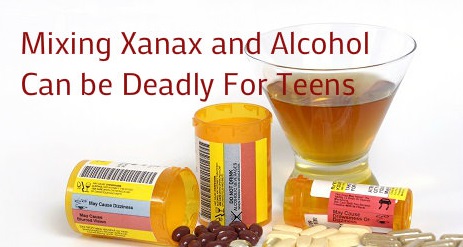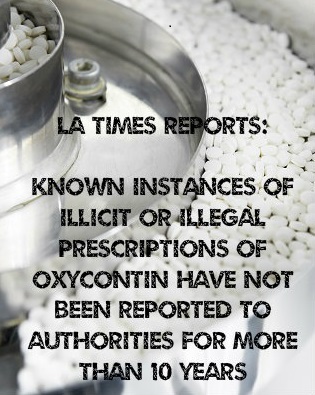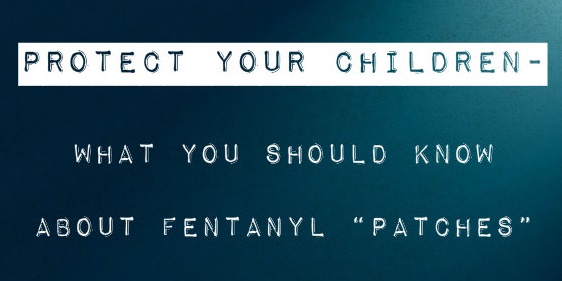Four days after Lindsay Lohan was released for her latest effort at rehab, and just as her latest film, “The Canyons,” is airing on limited release, the 27-year-old starlet was invited to sit down with Oprah as part of OWN’s Oprah’s Next Chapter series. The Aug. 18, 2013, interview commences before an eight-part docu-series, airing in 2014, in which OWN will follow the actress’ life.
“The Canyons” is a provocative, independent Paul Schrader film—an edgy erotic thriller. While the film is receiving mixed criticism, its star actress is receiving excellent reviews for her role. IndieWire called “The Canyons” one of the “50 Indie Films We Want to See in 2013.” Lohan may be, as Oprah describes her in the interview, “both an adjective and a verb for child-star-gone-wrong” but it cannot be said that the famous young actress lacks talent.
Candid Lohan
What Oprah was hoping for, along with millions of viewers, was a new Lohan—an open and candid one. Dressed in a bright tangerine dress, slick ponytail, and with nude lips and smoky but subtle daytime eyes, Lindsay did not disappoint.
“I’m an addict,” the young actress said with no hesitation.
Multiple Addictions
She explained that her addiction is to alcohol, which had served as a gateway to other things, like cocaine. Lohan told Oprah that she’d used cocaine 10 to 15 times, always snorting it. In the past, she’d claimed to have used cocaine only a few times, but said she was scared then of admitting the truth and being judged. Lohan told Oprah that cocaine was not something she enjoyed—she always felt bad the next day—and that she’d used it because it allowed her to drink more, as well as the fact that, “It was a party thing. People would have it, and I’d do it.”

Courtesy of: http://www.nydailynews.com
On the prescription side, Lindsay admitted to having felt reliant on Adderall, and that giving it up might be her biggest challenge. She told the talk show host that she hadn’t used Adderall like many young women and celebrities do to keep weight down or as a stimulant, saying she could eat normally and sleep while using the prescription stimulant. She stated that she had been prescribed Adderall for ADHD and that it had helped her feel “grounded,” but that she is noticing how much calmer she feels without the drug. Lohan explained that she is now learning to feel grounded on her own for the first time, without the assistance of substances.
Fame and Partying at a Young Age
Oprah asked the actress about all the chaos in her life, starting with becoming a star at the age of 12 with the release of “The Parent Trap,” the remake of a 1961 Disney film about twins separated by their parents who find one another and conspire to bring their family back together. When “The Parent Trap” was released, Lohan became instantly famous, and only a handful of movies later, at just 19, she was making $7 million per picture. Paparazzi were following the starlet’s every move and tabloids were busy reporting her partying habits, alleging that her parents were exploiting the young star and even partying with her (even when she was still a minor), revealing her father’s financial misdeeds and habit of landing in jail, as well as her parents’ presumed struggles with addictions.
Crazy Family Events
Lohan told Oprah that no one had been there to guide her and that no one had truly stepped in to help her understand or manage so much money. But she doesn’t blame her parents, not even for the episode in which her father released a screaming telephone tirade between himself, Lindsay and her mother in which Lindsay accused her mother of using cocaine. About the event, Lindsay said she’d come home late from being up too long partying and was behaving in a way she later felt deeply ashamed of. The actress told Oprah that she had lied to her father about her mother using cocaine and had done it simply to hurt her mother.
Chaotic Way
Referring to these former chaotic events and Lohan’s own descriptions of her troubled past, Oprah asked if Lohan didn’t believe she may have been addicted to chaos. She agreed that she was. “I think so. Yeah, it was a comfortable choice to me. What was chaotic to other people on the outside looking in was normal. There is something to be said about me learning to be comfortable with things just being OK.”
Regarding the jail time the young actress was sentenced to for a DUI charge, Lohan admitted that subconsciously, she believes she wanted to go. What she’d needed then was peace from the chaos and ironically, a part of her believed being sent to jail might give her that. She said, “Having all the chaos around me that I was so comfortable with, I somewhere inside knew I wanted to go to jail. And I think that that was subconsciously being put out there just by my actions, or lack thereof.”
New Realization
Lohan’s latest stint in rehab occurred by court order, but she says this time was different, that she is different. Although the judge required that she go, she didn’t fight it like she had in the past. She explained to Oprah that those who worked at Betty Ford and Cliffside Malibu (she spent time in both) must know something she didn’t. She referenced Albert Einstein’s definition of insanity: “Doing the same thing over and over again and expecting different results.” Regarding the judge and the healthcare providers at Betty Ford and Cliffside Malibu, Lindsay said, “I probably need to shut up and listen. You probably do know what’s best because what I’ve been doing hasn’t worked for me in the past.”
During the interview, Lohan referenced her growing spirituality as a source of strength in her life and in her sobriety. She explained, as many recovering people do, that she has no control over the future; she can focus only on today. Regarding what she can try to do to stay well, she said remaining present, clear-headed and focused is most important. While Lohan represents that vanishingly rare breed of young, talented celebrity, privileged with fame and wealth at an early age, she is also perhaps an archetype, the shadow side of celebrity—what happens when beautiful young women are thrust into the spotlight without a hand to guide them or friends and mentors to truly trust. She has been in turn exploited and addicted, though it is too simplistic to say she is either a victim or a villain.
Comparison to Classics
While many consider her a Hollywood punch line, Lohan has the smoky voice and cool, sensual beauty of certain classic ladies of Tinseltown’s epic past. It would be easy for her world to burn up in a flashbulb second like the brilliant, beautiful lives of women who’ve come before her: Judy Garland, Marilyn Monroe, Lani O’Grady or any of the other talented women who died too soon. Although it is never easy to remain forever on the road to health and success, and rarely continuously achieved for recovering addicts, least of all for the newly recovering or for people whose lives are so closely watched and judged, we can hope for the best for this young star. She may have her best work still ahead of her.
The Next Chapter
About her “next chapter,” Lohan told Oprah, “[I’m ready] to get the thing that has made me happiest my whole life back, which is to work really hard, stay focused and prove myself. I have to regain trust in people, in my career, that had doubts, and I fully respect that on their behalf. As long as I stay honest in myself and do the work I’m willing to do and have been willing to do and am doing, then nothing can stand in my way. I am my own worst enemy, and I know that.”
05 Sep 2013
Mixing Xanax and Alcohol Can be Deadly For Teens
If you look up the number one prescribed medication in the United States you will find Xanax at the very top of the list. The anti-anxiety medication is so widely prescribed these days that it can be found in a shockingly high number of American households. Used to treat anxiety and panic disorders, the drug is also commonly prescribed for patients complaining of high stress. Despite the fact that Xanax has recently been implicated in some high profile overdose deaths, the drug continues to enjoy widespread popularity.
Xanax is part of a family of drugs known as diazepines. Its chemical designation is Alprazolam and in 2009, 44 million prescriptions for the drug were written. By 2011 diazepine prescriptions were numbering above 260 million, of which Xanax represents the lion’s share.
Dangerous Quick High
Unfortunately the drug is not only popular with patients and their doctors but with young adults and teens looking for a quick drug-induced escape from reality. Teens like Xanax because it is so accessible – just grab one out of mom or dad’s medicine cabinet, right? – but also because the drug offers such a quick “high.” Within just 10 or 15 minutes users can feel an extreme high or low sensation. Users also experience accentuated symptoms of sedation like slurred speech, droopy eyes and other kinds of psychomotor retardation. Essentially, the person feels like they are drunk on alcohol.
Xanax provides a quick high because it is metabolized quickly, but the high ends just as fast as it comes on. The problem is that the drug also induces a state of memory impairment that is akin to blacking out. This creates a high risk situation since the person senses the absence of the sought after feelings but cannot remember that they recently took a pill, leaving them quite likely to pop another one. Taking even two Xanax in a short amount of time can have serious consequences.
Unfortunately, many who abuse Xanax also abuse alcohol. This means that users are taking two depressants at the same time. It is just like doubling up on Xanax in terms of risk. Drinking along with taking a Xanax may double the high, but it also ratchets up the risk factor – ingesting two strong depressants can slow down respiration (breathing) and the central nervous system to hazardously low levels.
Symptoms of Use
Symptoms of Xanax use include slowed heartbeat, trouble concentrating, slowed breathing, sleepiness, confusion and loss of memory. According to reports from the Substance Abuse and Mental Health Services Administration more than 60,000 hospital admissions were the result of Xanax abuse in 2008. Since prescription rates for the drug have steadily climbed by 9 percent annually, current figures can be expected to vastly outstrip that number.
Benzodiazepines like Xanax are medically appropriate when used to help epileptics prevent serious seizures. The drug is sometimes prescribed to treat insomnia but warnings abound recommending that the drug only be used short-term for treating sleeplessness. It is probably most commonly prescribed to calm symptoms of generalized anxiety disorder, but again the drug is recommended only for short-term use, not more than one month.
Xanax works by increasing activity of the brain’s own soothing mechanism. Neurotransmitters known as GABA are naturally occurring sedatives. When these neurotransmitters are abnormally excited long-term a physical and psychological dependence (addiction) can result.
What this means is that it is not hard at all for people using Xanax to quickly feel like they need the drug in order to cope. Tolerance is a term which describes how the body adjusts to the presence of medications and eventually requires more of a substance in order to produce similar results. Teens who take Xanax can wind up addicted to the drug before they know it.
If a teen is mixing Xanax – or any medication recreationally – with alcohol, the potential for addiction skyrockets, as does the risk of lethal consequences.
OxyContin is the brand name for a specific form of oxycodone, an opioid narcotic medication known for its potential to trigger problems with drug abuse or drug addiction. Because of the medication’s association with increased abuse and addiction risks, sale of all forms of oxycodone are strictly controlled under federal guidelines. However, according to a new investigative report by the Los Angeles Times, the manufacturer of OxyContin—a company called Purdue Pharma—has failed to report known instances of illicit or illegal prescriptions of the medication to authorities for more than 10 years.
After the report in The Times, two state senators in California have called on the maker of OxyContin to turn over the names of California physicians it suspects recklessly prescribed its pills to drug dealers and addicts.
Oxycodone Basics
Oxycodone is a synthetic substance made in pharmaceutical laboratories from a specific chemical found naturally in a plant called the opium poppy. When it interacts with nerve cells in the body’s central nervous system (brain and spinal cord), it reduces the body’s ability to feel pain. The U.S. National Library of Medicine lists available forms of oxycodone that include liquids, concentrates, capsules and tablets. While some oxycodone-containing products are sold without additional active ingredients, other products also contain acetaminophen, aspirin or ibuprofen. In addition to OxyContin, oxycodone-based medications include Percocet, Percodan and Endocet.
The same mechanisms that give oxycodone the ability to ease pain also give it the ability to alter normal function in the part of the brain that regulates pleasurable sensations. It is the intensity of the drug’s effects on the brain’s pleasure centers that accounts for its association with profound risks for abuse and addiction. Because of the potential for misuse of oxycodone, federal regulators have placed it on a list of officially controlled substances called Schedule II drugs. All substances on this list have clear usefulness as therapeutic medications, but also present enough risks to warrant strong restrictions on their use.
OxyContin Basics
OxyContin comes in tablet form and was originally marketed as a safer, long-acting alternative to morphine, another opioid narcotic capable of reducing moderate or severe forms of pain. When the medication hit the market, its safe use was significantly undermined by its easy crushability. This crushability encouraged abusers to rapidly introduce OxyContin into their bloodstreams through IV injection or inhalation. In an effort to correct a widespread pattern of misuse, Purdue Pharma introduced a non-crushable form of the medication in 2009. Following the release of this new product, misuse of OxyContin dropped by almost 200 percent. However, significant numbers of people across the U.S. still use the medication illicitly or illegally.
New Findings
In 2002, Purdue Pharma started tracking doctors across the U.S. suspected of knowingly prescribing OxyContin to people addicted to oxycodone or other narcotic or non-narcotic medications, as well as doctors suspected of selling their OxyContin supplies to drug dealers. As of 2013, the company had identified more than 1,800 physicians believed to be participating in these activities. However, Purdue Pharma has never made a concerted effort to release their list of suspects to any federal, state or local law enforcement agency, or to a medical body responsible for disciplining doctor misconduct. In fact, the company has sometimes made efforts to deflect attention away from purposeful, improper OxyContin prescribing by publicly linking the illegal availability of the medication to such things as robberies, theft of OxyContin by family members of legitimate users, and patients’ efforts to obtain the medication from multiple doctors.
Purdue Pharma only openly revealed the existence of its internal list of misprescribing physicians in June 2013. Because of the immense profitability of OxyContin, some investigators and public health officials have openly questioned the company’s motivations for not revealing its knowledge on the issue at any point in the last 10 years. Spokesmen for Purdue Pharma counter these criticisms by asserting that, while they have never released the names of all suspected doctors, they have separately given medical groups and law enforcement officials the names of 154 of the 1,800 physicians in their database. However, since no one outside the company has seen the full list of suspected misprescribers, there is no way to independently gauge the accuracy of these statements.
Considerations
Some of the doctors under investigation for illegally prescribing or selling OxyContin have been involved in widespread distribution efforts that meet federal and state standards for drug dealing. For instance, one California physician was recently convicted of illegally selling over 1 million doses of the medication. Another doctor prescribed millions of dollars worth of OxyContin and other opioid narcotics to people known to have problems with drug addiction. Officials from Purdue Pharma state that they have no legal obligation to assist law enforcement or medical regulators in their efforts to control OxyContin’s availability.
03 Sep 2013
Fentanyl “Patches” – Deadly For Children
A 12-year-old girl from Clinton, Missouri was found dead in June 2013 after a suspected overdose of the Fentanyl patch. Destiny Spilter died after she stuck a used fentanyl patch on her thigh. The patch had been previously worn by her grandmother who, once done with it, threw it in the trash.
Fentanyl is an extremely strong opioid used to manage pain. It is 100 times more potent than morphine and 40 times stronger than heroin. Overdoses, some even fatal, are common.
Many patients are prescribed Fentanyl when other types of narcotic pain medications no longer offer relief. In most cases, this is because the body has developed tolerance to the pain killer, and it needs more and more of the substance to offer the same type of relief. Since many medications are lethal at such high doses, doctors must look to a different medication altogether instead of just increasing the dose of the current prescription. Fentanyl is a favored tool in the pain-management arsenal.
Use with Extreme Caution
Despite its benefits, however, Fentanyl must be used with extreme caution as even patients who have topped out of their traditional pain medications have found it to be too strong to tolerate. The patch, even at its lowest dose, has the potential to reduce respiration to the point of death.
The Fentanyl patch was created to offer continuous relief to patients in chronic pain, but over a period of several days. If a person were to ingest that amount of Fentanyl all at once, it would likely be fatal. Given its high potency, there are a number of safety advisories and side effect warnings regarding use of the drug. One of the FDA warnings recommends flushing the patch after use so that unintended recipients do not ingest the remaining residue — either accidentally or on purpose. Even though the Agency recognized that there may be some environmental concerns about flushing, it felt that the risk associated with accidental exposure far outweighed any potential risk to the environment or water sources.
Tragedy – Too Often
Destiny’s grandmother, who was using the patch to manage her chronic back pain, did not follow these fairly simple instructions. Not surprisingly, the curious young girl found the patch and put it on, perhaps mimicking the behavior she previously observed in her grandmother. Even after the patch is used for three days, studies show that it could still contain more than 50 percent of the original Fentanyl dose. Her body was unable to handle even the amount of Fentanyl that remained in the patch and she died.
Unfortunately, accidental overdose is not uncommon for the Fentanyl patch — especially in children. Children may be initially attracted to the patch, thinking that it is a sticker. And because the patch is meant to stay on the skin for up to 3 days, there is typically plenty of glue remaining to keep it securely on the child’s skin. If they place it in an area that is hidden by clothing, caretakers may not notice it until the damage has been done.
02 Sep 2013
Taking Drugs to Boost Grades
For some, college was a time for sleeping in and goofing off. For others, memories of college are associated with stress as students worked to achieve good grades while juggling intense academic requirements, extracurricular activities and relationships with a new level of personal responsibility.
The stakes are high. Students understand that their grades will help them secure a good job with financial security. Competition can be fierce to not only be accepted into but also remain in specialty colleges within the university that teach skills to teachers, therapists, accountants and engineers.
 “Smart Drugs” Not so Smart
“Smart Drugs” Not so Smart
Recently, ABC affiliate 13WHAM of Rochester, New York, highlighted one way that students choose to handle the pressure – misusing prescription stimulants to increase focus and eliminate the need for sleep, known as “smart drugs.”
Adderall is just one brand name drug that students abuse as a study aid. Prescribed to treat attention deficit hyperactivity disorder (ADHD), the drug is so widely issued by doctors that students find it relatively easy to obtain as friends may be willing to sell their extra pills.
A study published in The Addiction Journal indicated that the problem is becoming widespread. One in four college students indicate they have used pills to get through an exam or other stressful academic situation.
The 13WHAM story profiles an individual under the pseudonym of Steve who regularly uses stimulants to meet academic requirements. He said the medication increases focus and avoid sleeping, allowing for a 72-hour straight study session he did when taking 60 milligrams of Adderall, which paid off with good grades.
Adderall Abuse & Risks
Adderall abuse is becoming more common and the effects of the drug can lead to increased medical interventions and the need for emergency care.
Students are unaware of or underestimate the risks associated with the misuse of prescription drugs. They may believe that prescription drugs are somehow safer than street drugs or that there isn’t a risk of mixing drugs with other medications. Experts, on the other hand, warn that the drugs can be extremely dangerous, with adverse reactions including stroke, heart attack and psychotic episodes.
13WHAM reported that university health center doctors were seeing increased attempts by students to get prescriptions for stimulants as finals approached. The physicians said that while they are generally able to help students who have a diagnosis for ADHD, it takes more than one exam session to determine whether a student is abusing stimulants.
What Parents Can Do
Parents should take time to talk to their college-age children about the risks of using stimulants. They can also speak openly about their opinions and rules related to substance use. While students enjoy an increased level of freedom at college, many are still receptive to their parents’ viewpoint while they are receiving support, both financial and otherwise.
While parents may doubt their influence, particularly after their teen has left home to pursue a degree, studies show that parents play an important role. Teens who abstain from substance use repeatedly indicate that their parents were influential in helping them decide not to use substances.
Parents can also be a source of support for their college-age child as they face the intense pressure and competition to succeed in school. Keeping an open conversation about the challenges and expectations involved with getting a degree may help a student avoid making poor decisions related to stress management.





